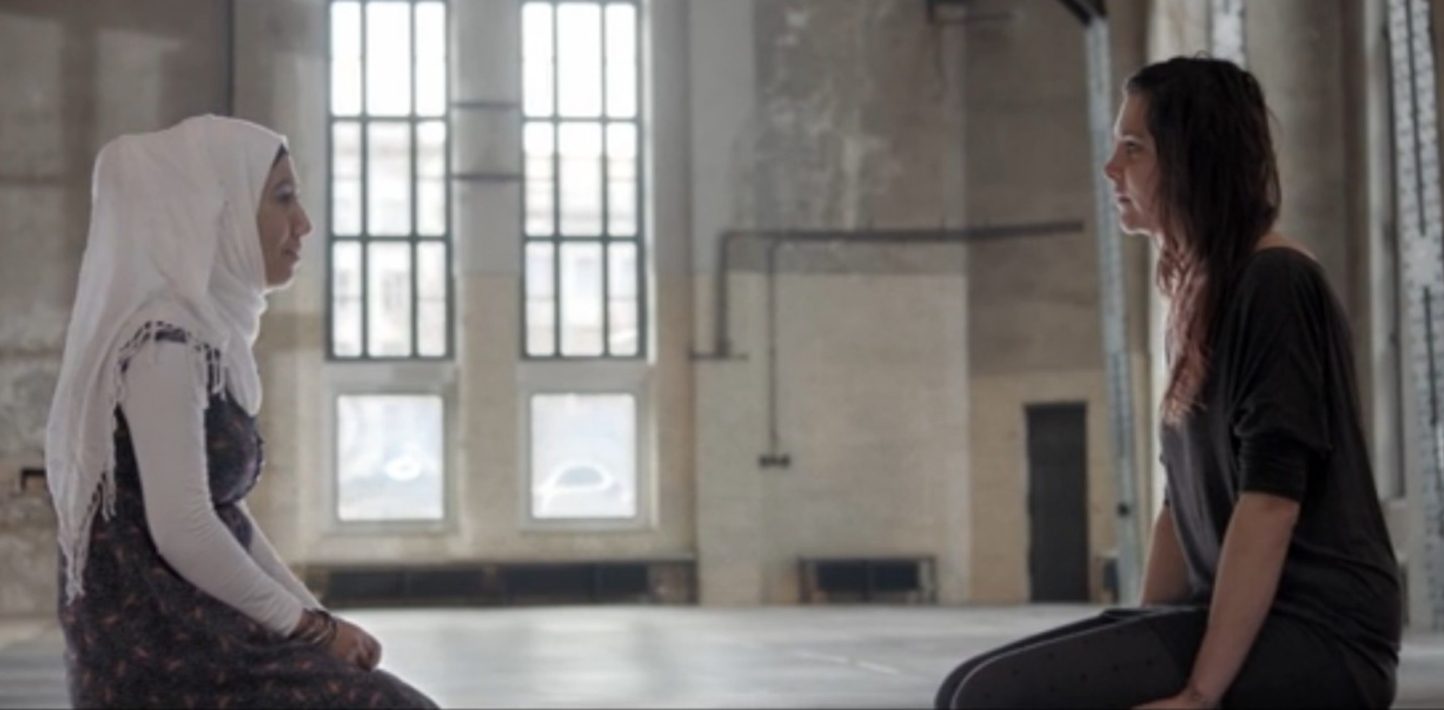A poignant new video experiment breaking down barriers between recently-arrived refugees and Europeans will be launched globally by Amnesty International tomorrow, 25 May 2016.
The video, Look Beyond Borders, is based on a theory that four minutes of uninterrupted eye contact increases intimacy. Amnesty International Poland and Polish ad agency DDB&Tribal applied the theory, developed by psychologist Arthur Aron in 1997, to the refugee crisis, sitting refugees from Syria and Somalia opposite people from Belgium, Italy, Germany, Poland and the UK, with overwhelmingly positive results. It was filmed by Amnesty International Poland in Berlin in April 2016.
“We decided to conduct a simple experiment during which refugees and Europeans sat across from each other and looked each other in the eyes. We recorded these very human encounters and the short film speaks for itself. People from different continents who have literally never set eyes on each other before come away feeling an amazing connection,” says Draginja Nadażdin, Director of Amnesty International Poland.
We decided to conduct a simple experiment during which refugees and Europeans sat across from each other and looked each other in the eyes. We recorded these very human encounters and the short film speaks for itself.
Draginja Nadażdin, Director of Amnesty International Poland.
“It takes a heart of stone to watch this video without shedding a tear. Today, when the world appears rife with division and conflict, it is always worthwhile to look at everything from another person’s perspective. Too often, what gets lost in the numbers and headlines is the suffering of actual people, who, like us, have families, friends, their own stories, dreams and goals. What if we stopped for just a moment and looked at who they really are?”
“Borders exist between countries, not people. And it is imperative that our governments start putting people before borders and their own short-term political gain.”
The film shows natural, spontaneous reactions between people meeting for the first time in a warehouse near Berlin’s old Cold War-era crossing, Checkpoint Charlie. The refugees came from Syria and Somalia and had lived in Europe for less than a year.
“We conducted the experiment in Berlin because the city symbolizes the overcoming of divisions. In that sense, the most important thing is to give people time to understand each other better and get to know one another,” said Hanna Waśko, one of the campaign organizers from ad agency Big Picture.
Borders exist between countries, not people.
Draginja Nadażdin
Watch the Look Beyond Borders video on YouTube.
On 19 May, Amnesty International’s Refugees Welcome Index showed that the vast majority of people around the world are taking the refugee crisis personally, with 80% of those surveyed across 27 countries saying they would let a refugee live in their country, 10% in their own home.
In Germany, where the video was filmed, 96% said they would let refugees live in their country.


